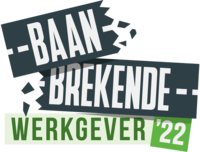
4 essential principles for creating accessible web content.
This is everything to do with making web content more accessible, hence: Web Content Accessibility Guidelines.
These guidelines are a collection of recommendations, that aren’t technology related, and make web content more accessible for people with a disability, such as the blind (or visually impaired), or those with cognitive or neurological disabilities etc.
Applying WCAG ensures that content is generally more accessible and easier to consult, even for users who perhaps don’t have a disability but, for example, have disabled JavaScript. This can also apply to elderly people who don’t have many technical skills or mobile users who view your web content on a very small screen, or perhaps in poor lighting.
The WCAG was developed by the W3C (World Wide Web Consortium).
Challenges for organizations and businesses
All of the Flemish government’s websites and applications must be as accessible as possible. On 5 July 2018, the Belgian Chamber of Representatives approved a bill on the accessibility of the websites and mobile applications of public authorities. (You can read a detailed article about the legal framework here)
Accessibility is based on 4 principles
- PERCEIVABLE
Information and components must be able to be presented in a way that is perceivable for users. This means that users must be able to perceive the information presented (it can't be invisible to all their senses). If users can’t see the information, we can, for example, provide for it to be listened to (through a screen reader for example). - OPERABLE
Components and navigation must be operable. This means that users must be able to operate the interface (the interface does not require interaction that the user can’t carry out). - UNDERSTANDABLE
Information and the operation of the user interface must be understandable. This means that users must be able to understand the information and user interface (the content or operation can’t be beyond their understanding). This brings back one of the basic principles of UX: Keep it Simple. - ROBUST
Content must be robust enough to be interpreted reliably and consistently by diverse web browsers and other software, including assistive technologies. This means that as technologies and browsers evolve, the content must remain accessible.
You can find the full detailed WCAG checklist here, divided into the 4 aforementioned principles. The more recommendations you can follow, the more accessible your web content will be.

